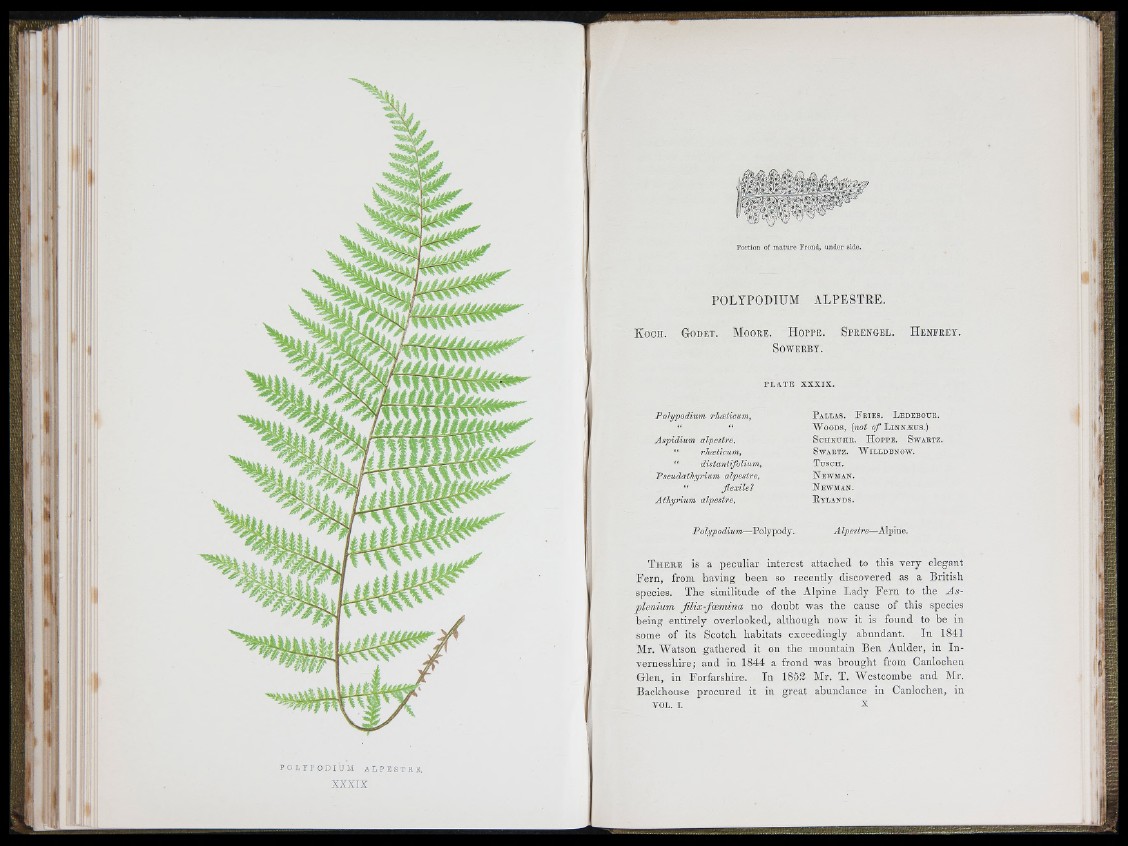
i
Portion of mature Frond, under side.
POLYPODIUM ALPESTRE.
K o c h . G o d e t . M o o r e . H o p p e . S p r e n g e l . H e n p r e y .
S o w e r b y .
P L A T E X X X IX .
Polypodium rhæticum,
A s
“ rhæticum,
“ distantifolium,
Pseudathyrium alpestre,
“ fle x ile?
A th y r ium alpestre,
Polypodium—Polypody.
P a l l a s . F r i e s . L e d e b o u r .
W o o d s , {not o f L i n n æ u s . )
S c h k u h r . H o p p e . S w a e t z .
S w a r t z . W i l l d e n o w .
T u s c h .
N e w m a n .
N e w m a n .
R t l a n d s .
A Ipestre—Alpine.
T h e r e is a peculiar interest attached to this very elegant
F e rn , from having been so recently discovered as a British
species. The similitude of the Alpine Lady F e rn to the A s plenium
filix -foe m in a no doubt was the cause of this species
being entirely overlooked, although now it is found to be in
some of its Scotch habitats exceedingly abundant. In 1841
Mr. Watson gathered it on the mountain Ben Au ld e r, in In -
vernesshire ; and in 1844 a frond was brou g h t from Canlochen
Glen, in Forfarshire. In 1852 Mr. T. Westcombe and Mr.
Backhouse procured it iu great abundance in Canlochen, in
V O L . I. X